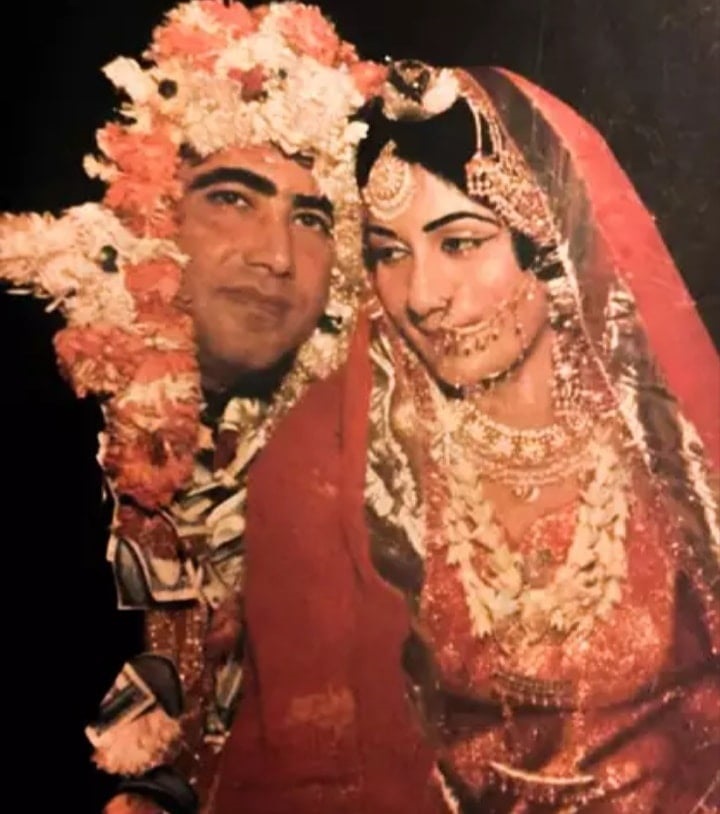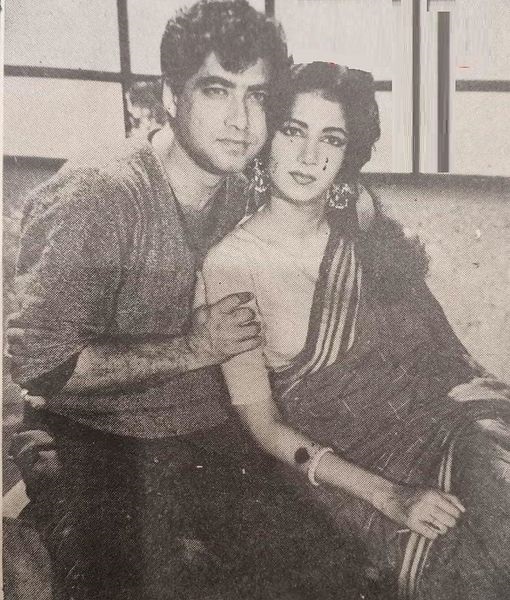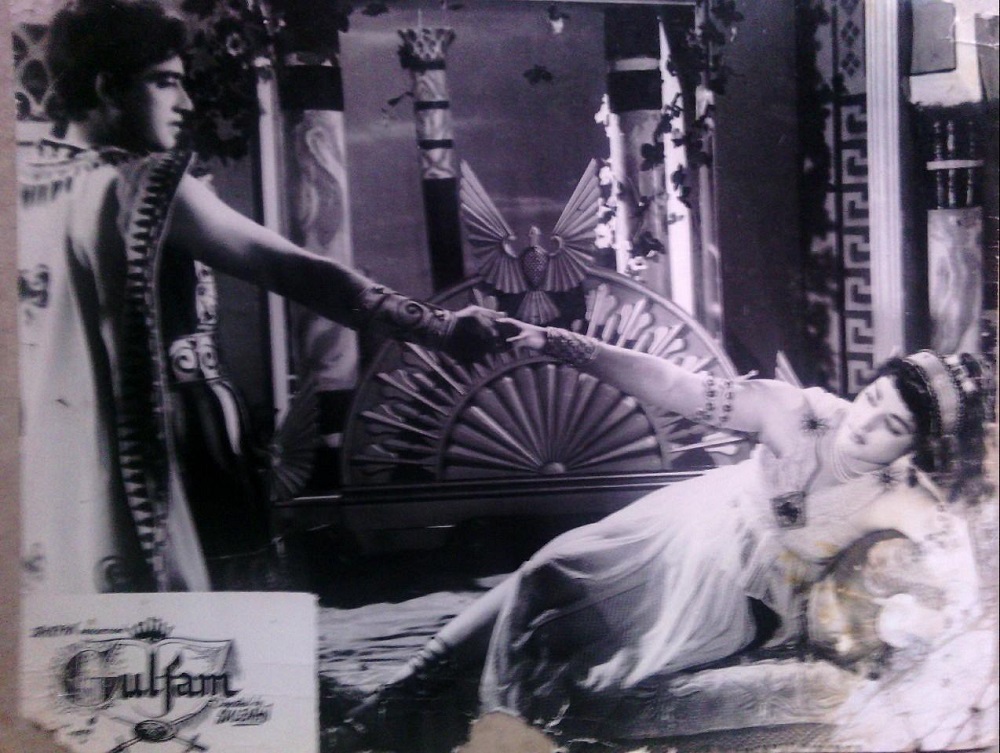Written by: Muhammad Suhayb
Posted on: April 06, 2023 |  | 中文
| 中文
(L to R) Waheed Murad, Santosh Kumar, Faizi and Darpan
A toothpaste ad smile, boy next door looks, expressive eyes and attractive dancing skills were once considered basic ingredients for the success of a film star. Won't you be surprised that the rise of Lollywood’s first such actor was not due to his external appearance but because of a filmi story regarding an internal organ? Yes, it was due to the ‘kidneys’, that turned an out-of-work Darpan, into a superstar.
By the mid-50s, Lollywood had started to churn out decent films. Competition from India reduced due to the Jaal agitation (protests by Pakistani film community over illegal release of the Indian film Jaal in Pakistan) and Bollywood movies released before 1954, were restricted to limited shows. Santosh Kumar (real name Syed Moosa Raza) and Sudhir (real name Shah Zaman Khan) were riding high and appearing in leading roles in every other Lollywood film. Despite being non-Punjabis, they were accepted in Punjabi films as well. Santosh got full points for his looks, while Sudhir for his antics and both made their debut before Partition. Their busy schedule gave rise to actors like Kamal, Ejaz, Habib, Ratan Kumar and Aslam Pervaiz. Only Syed Kamal was accepted immediately by the audience, due to his uncanny resemblance with Bollywood super star Raj Kapoor. Others had the ‘x-factor’ (a noteworthy talent that could differentiate them from others) missing, which paved the way for the return of Syed Ishrat Abbas, who had acquired the name of Darpan for films.
Being the younger brother of Santosh Kumar, he lived in Bhaijan’s shadow for a while. After appearing in a couple of Lollywood films in the 1950-51 era as ‘Ishrat’, he decided to try his luck across the border. In days when Dev Anand, Dilip Kumar and Raj Kapoor ruled, ‘Ishrat’ was renamed as Darpan and cast in a few films: Adl-e-Jahangir, Barati and Heer. In A R Kardar’s Barati, Darpan failed to shine in the presence of Om Prakash, Agha and Johnny Walker. However, he became famous for his off-screen activities and had to be recalled to the ‘land of the pure’. Nigar Sultana, the actress who starred as Bahar in K. Asif’s Mughal-e-Azam, became involved with Darpan, which became the main reason for his suddenly moving to Pakistan. It is also believed that the role of Birju from Mehboob Khan’s Mother India, (later played by Sunil Dutt) was there for Darpan’s taking, had he stayed back.
Darpan was welcomed to Lahore by his friends of pre-Partition days, editor-turned-assistant director Al-Hamid, and his subordinate Iqbal Rizvi, with open arms. Both belonged to Hyderabad Deccan, and the latter’s father was friends with Darpan’s grandfather Syed Hussain Shah. In those days, the vivacious Neelo was in the news for her brief appearance in the song Haaye Mausam rangeelay from Saath Lakh (1957). She was part of every film magazine and pundits predicted a bright future for her. She needed a lead role to blossom and the blue-eyed, baritone voiced Darpan needed a ‘heroine’ to succeed. While working in producer/director Nazir Ahmed Khan’s Noor-e-Islam, Darpan was bitten by the production bug. The only obstacle was ‘money’, but Nazir rarely paid any advance for his work. Darpan sent Iqbal Rizvi to meet Nazir and receive the fee (a mere 3,000 rupees) for Darpan’s role in the under-production ‘Noor-e-Islam’. Nazir complained of shortage of funds and even claimed that his superstar wife Swaran Lata, heroine of Noor-e-Islam, got ration on credit. Iqbal, who went on to pen stories for films like Armaan, Insaan aur Gadha and Sar Kata Insaan, and direct a few more, used the technique mostly used in films. ‘I was alerted about Nazir’s miserliness by Darpan, and thought of a plan. I simply told Nazir that Darpan was having issues with his kidneys and needed the money for a proper check-up. Darpan would die if he fails to get the amount, and your film would be left incomplete,’ recalled the 89-year-old from Lahore. Fearing a huge loss, for the only time in his life, Nazir arranged for the money and Iqbal returned with the cash. Saathi’s pre-production work began, after up-and-coming Neelo was signed for a mere 501 rupees. Iqbal Rizvi was asked to write down a script while Al-Hamid was made the director. Darpan's brother, S Suleman was taken as assistant to the director.
Santosh Kumar once paid the team a visit, and asked for the film’s narration. Darpan’s character, Anwar Ali B.A., had to face hardships in life, while Neelo appeared as a tomboy and Naeem Hashmi as a don, in a coming of age rom-com. Whatever mischief we did in our college days were made part of the story; running away with clothes of a friend, framing a fellow or fighting a colleague were just a few of them. It was a funny movie with a romantic angle, but it did not appeal much to Santosh Kumar, who laughed and said filmain aisay nahi banti hain, remembered Rizvi as if it happened yesterday. The team had purchased 2,000 feet of negatives for 300 rupees (150 per 1000 ft) to shoot the film. Camera was arranged from Evernew Studio Lahore and some shooting was done. In a meeting arranged for the distributors to watch the rush prints, Nisar Murad, the father of the legendary actor Waheed Murad, purchased the rights of Saathi for Sindh and Balochistan circuits. Producer JC Anand stepped it and got the rights for Punjab. With money pouring in, the shooting was completed and Saathi was released in 1959 to a packed audience. It had all the ingredients of a hit film: comedy, action, excellent songs, suspense and drama. The cast excelled in their roles and the trio of Darpan, Iqbal Rizvi and Al-Hamid were in demand. The team scattered but Iqbal Rizvi stayed with Darpan for years. Darpan became a rage, his style, walk and dressing were followed by youngsters, but his carefree attitude ruined his career. The last successful film he appeared in was Al-Hilal in 1966, and his reign ended with the emergence of Waheed Murad, Nadeem and Muhammad Ali. With Saiqa, Fasana-e-Dil and Saza, Darpan graduated to character roles. The last time Darpan appeared as a lead was in Punjabi film, Ajj di Taza Khabar (1976), simply to give his third brother Mansoor a reasonable launching pad. He was paired opposite Babra Sharif, who was born a year after Darpan appeared in Billo in 1951. The era of Darpan was gone and he died in oblivion in November 1980. He had married Nayyar Sultana, his co-star of Baaji in 1962, who remained with him till he passed away. Nayyar continued to appear in films after Darpan's demise, and worked till she died of cancer in 1992. They were a famous couple who were socially active in the Lahore film crowd and looked good together. Darpan may not have had a long innings to play, but 52-year-old Darpan was indeed Lollywood’s first indigenous hero, who made ladies weak in the knees.



You may also like: